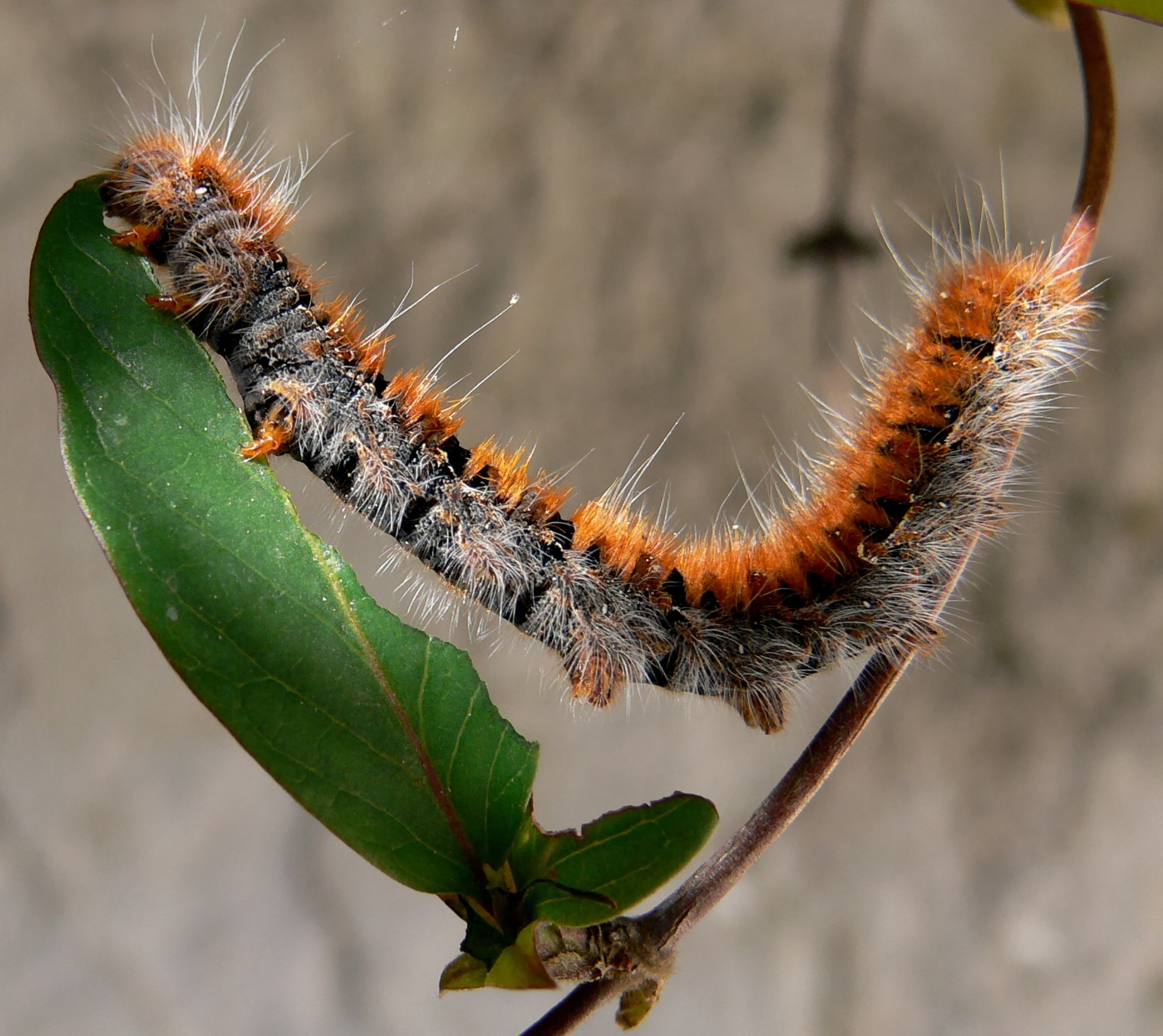When it comes to insects, there is a wide diversity of sensory abilities: some have amazing vision, others have an incredible sense of smell, and some have super hearing. But why do some insects have better senses than others, especially when they live in similar environments? One hypothesis is that their sensory capacity is influenced by their life history strategy, which includes things like what they eat and when they decide to reproduce. Insects with different life history strategies might benefit from different types of sensory abilities, even if they live in the exact same place.

A fox moth caterpillar eating a leaf (Attribution: Jodelet/Lépinay)
There are conflicting hypotheses about how diet should affect sensory capacity. One hypothesis, the “smart generalist” hypothesis, states that species that have a broader diet would benefit from having better sensory abilities so they could recognize a variety of resources. The other hypothesis, the “smart specialist” hypothesis, states that species with a specific diet would benefit from having better and more fine tuned sensory abilities in order to detect the limited number of things they’re able to eat, while generalists could afford to have lower sensory capacity. While empirical evidence has mainly supported the smart generalist hypothesis, there have been studies supporting both, so there isn’t a clear consensus.
Another factor that might impact sensory ability is breeding strategy. There are two breeding strategies: capital breeding and income breeding. Capital breeding insects carry over resources from their larval stage, while income breeding insects rely on resources they gather as adults. This means that income breeding insects generally have more complex behaviors (for finding resources), more mobility, and longer reproductive life spans. This leads to the “smart income breeder” hypothesis, which states that income breeding insects will have higher sensory capacity than capital breeding insects because they need to be able to locate food and other resources.

A geometrid moth (Attribution: Pavel Kirillov from St.Petersburg, Russia)
To test these hypotheses about diet and breeding strategy, Javoiš et al. looked at sensory capacity across 60 different geometrid moth species from northern Europe. They used four simple measures to determine sensory capacity: eye size (related to visual acuity), antennae length and shape (related to olfactory ability), and forehead width (potentially related to volume of relevant sensory brain regions). By using these simple measures, they were able to compare across a large variety of moth species. They also chose to look at both male and female moths in order to gain a more complete picture and to be able to compare between the sexes.
After measuring these variables for all of the different moth species, they found that eye size was decreased and antennal length was shorter in capital breeding females, antennae were more likely to be feathery in capital breeding males, and that males had wider foreheads with broader diets.

A closeup of a male luna moth’s antennae (Attribution: D. Gordon E. Robertson)
These results support the smart income breeder hypothesis- females of capital breeding species had decreased sensory capacity when compared to income breeders. This is also supported by the lack of correlation between sensory capacity and breeding strategy in males. The increased probability of feathery antennae in capital breeding males may be related to differences in geographical dispersal between capital and income breeding females, which may cause capital breeding males to need increased sensitivity to locate females via scent. But, antennae shape is not well understood and more research needs to be done.
No effects of diet breadth were found in females, and while males with generalist diets had wider foreheads, it is unclear if this is a valid measure of sensory capacity. The lack of clear correlation between diet breadth and sensory capacity may be due to a balancing of the two hypotheses, with some species being smart generalists and some being smart specialists. These results may also be because the study looked only at adults, but for some species juvenile behavior may be equally or more important.
Overall, breeding strategy was more predictive than dietary strategy with respect to sensory capacity in moths. This is surprising because there has been a lot more of a focus on diet than on breeding strategy in ecological studies about sensory capacity. It might seem more obvious that diet would influence sensory abilities, but this study shows how sensory capacity can be influenced by a variety of different factors, even those that you wouldn’t immediately expect.
Reference:
Javoiš Juhan, Davis, R. B., & Tammaru, T. (2019). A comparative morphometric study of sensory capacity in geometrid moths. Journal of Evolutionary Biology, 32, 380–389.
